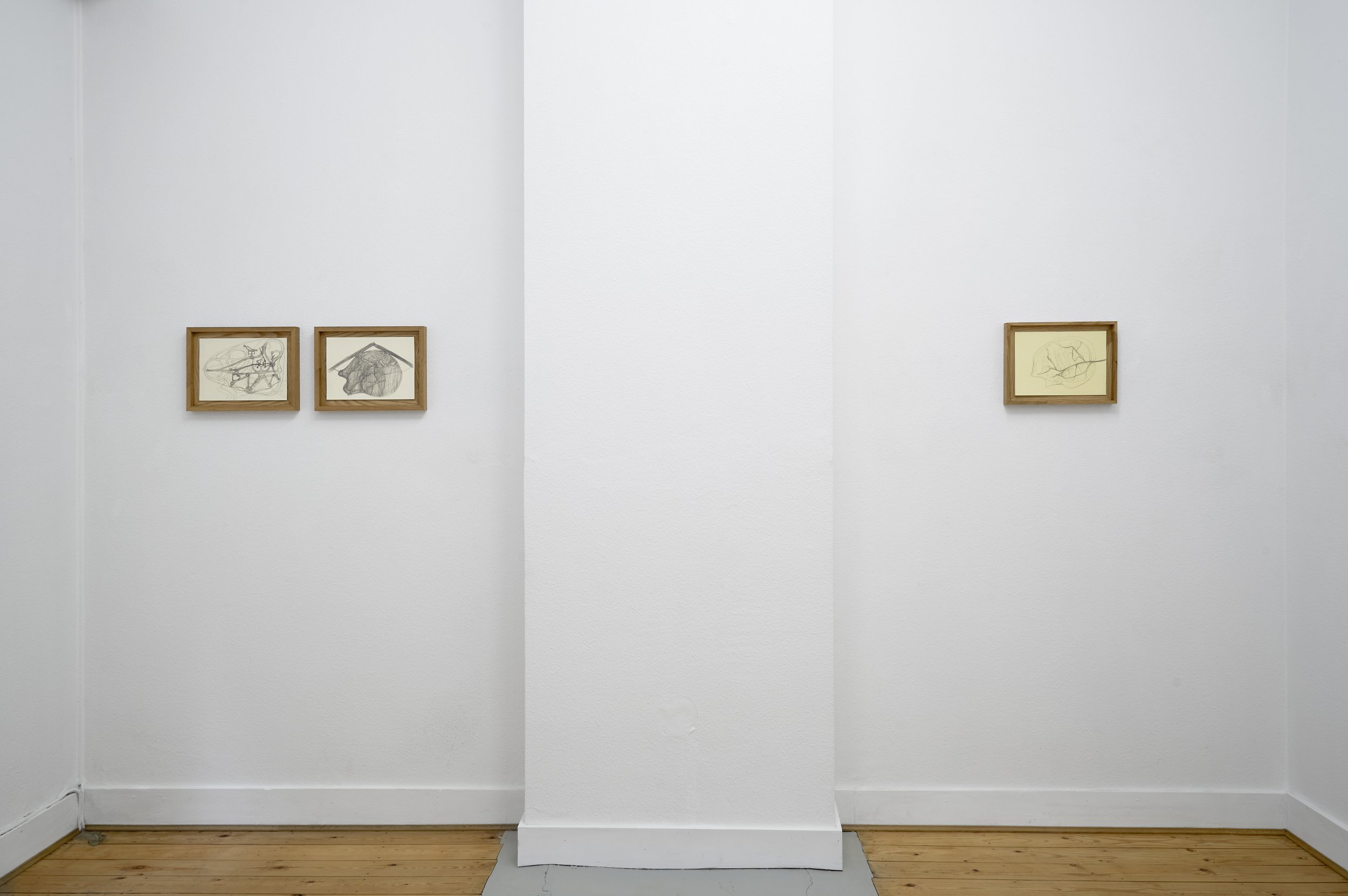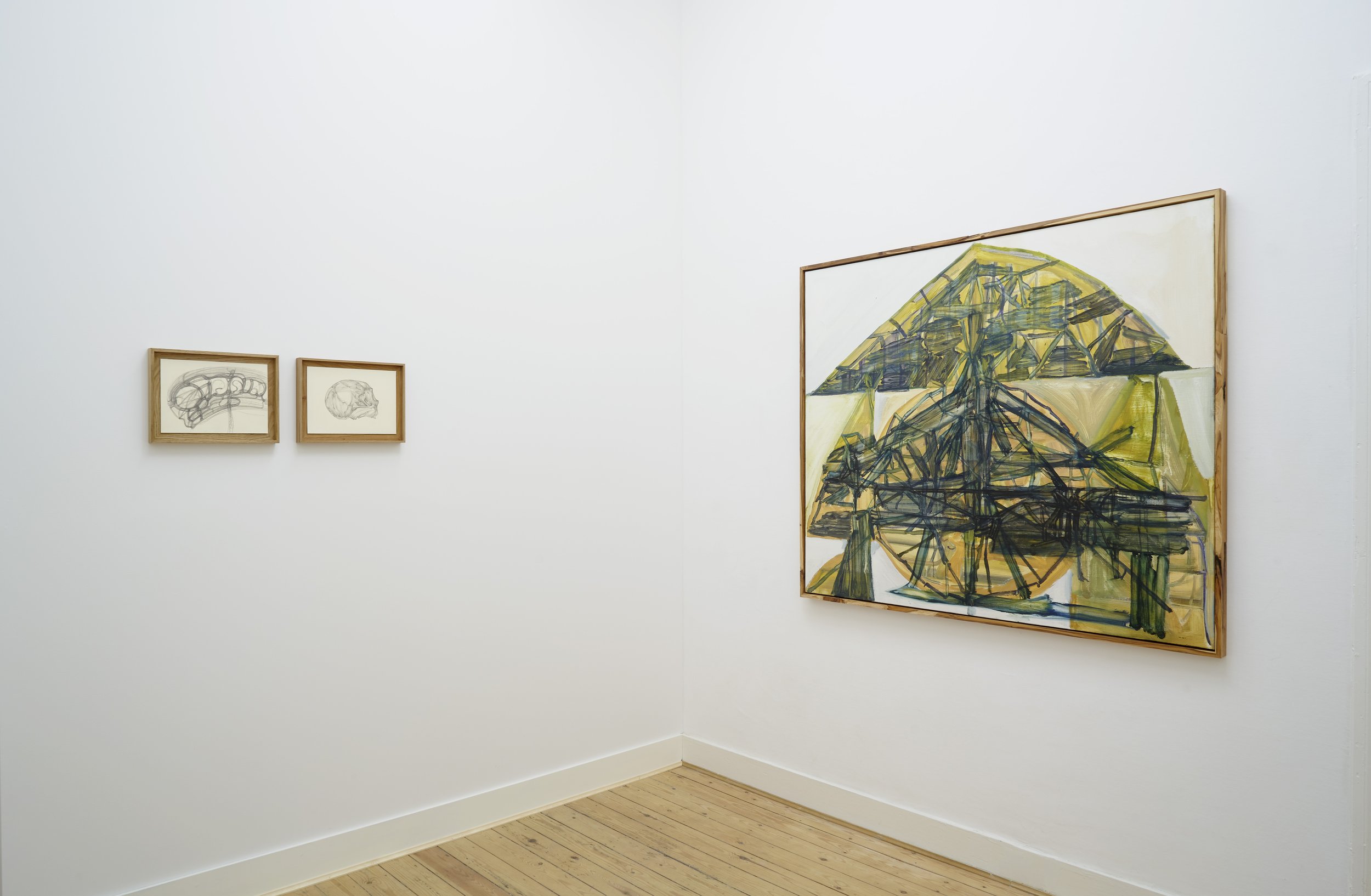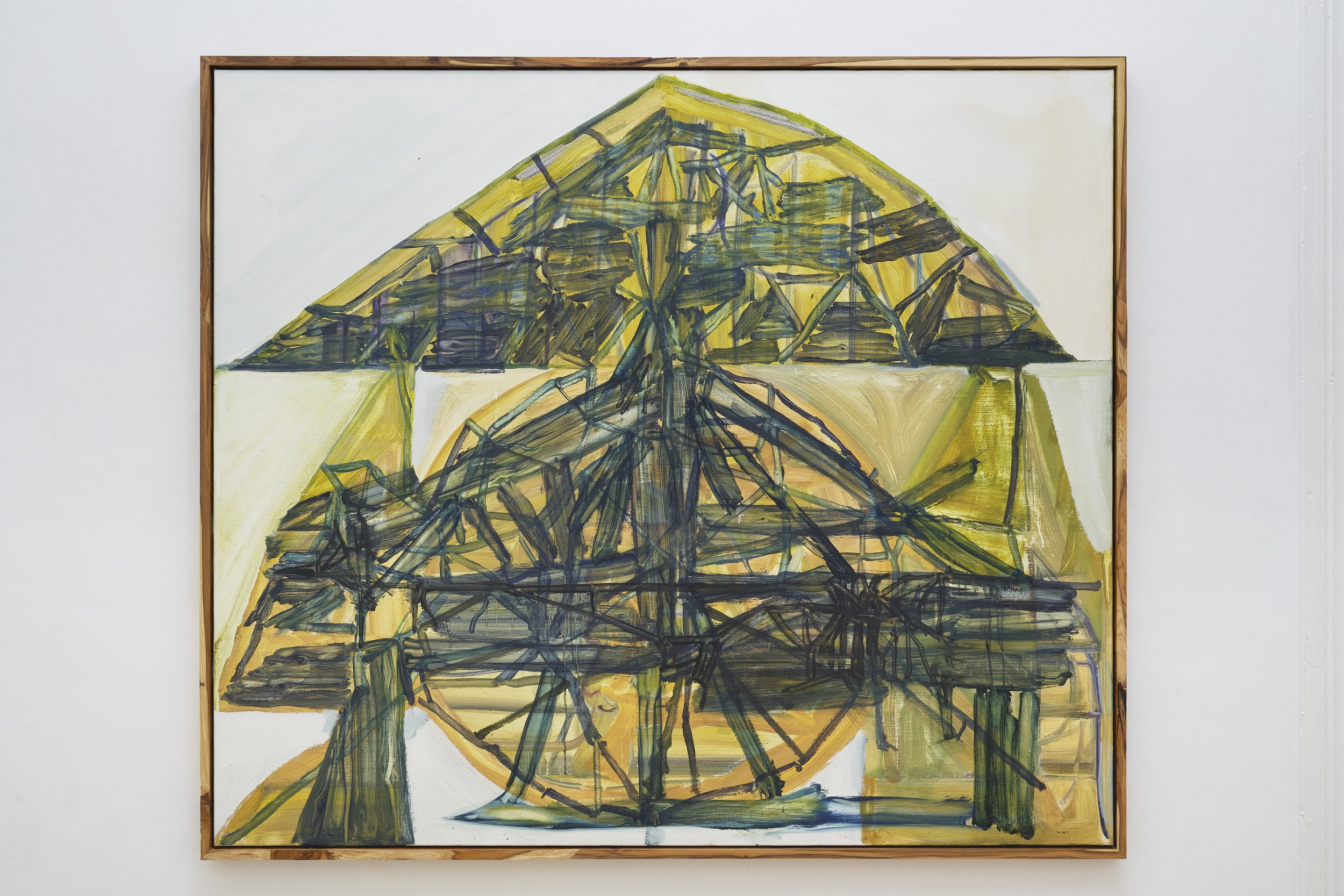Fontanelle
Moonstreet, Antwerp, 2022
Artist: Jonas Dehnen
Louis-Philippe Van Eeckhoutte: In the 1970s Andy Warhol made a series of Skull paintings. His assistant Ronnie Cutrone commented that to paint a skull ‘is to paint the portrait of everybody in the world’.
Jonas Dehnen: Everybody and nobody of course. If a picture of a skull isn't a portrait of everyone then it (at the very least) is a picture everyone understands and comprehends immediately. It's democratic and horizontal, flat, banal. I think that Warhol made images of skulls in a very direct way, ambiguity only enters them in the tension between the subject and the technical execution of the work (garish colour, mass-production methods and things like that).
I'm aware of how trite the skull as a subject is, perhaps that's why I’ve avoided most facial features in favour of the cranial vault - which, as an amorphous blob-like shape, lends itself to the re-combination with all sorts of other elements.
Cranial patterns are highly individualistic, no two skulls have an identical pattern. In scientific literature those patterns are often connected to terminology of topography and landmarks. Are the drawings landscapes of the mind?
I can't deny that there's some truth in that, in a sense they are. The material of a drawing and its content become entangled and intermingled during the process of making it. Thinking and doing (and thinking and seeing) collapse into one another to some extent, giving rise to a giddy moment of self-negation (or is it self-absorption? It's hard to tell).
Making marks on a surface, (and looking at them once they've been made) allows the mind to become the landscape, rather than the other way around. Thoughts are coloured by what we see, or (seemingly) even created by it in the first place. A lot of the thoughts I've been doing (seeing?) loop into themselves on a piece of paper. At least I think that's what’s been going on…
As a painter, what is the importance of making marks on paper with pencil? What’s the place of drawing within your practice?
It's a much more direct way of making a mark, there's no liquid element, no soft go-between in the form of the hairs on a brush. Painting is always a walk on a tightrope, a search for a sweet spot sandwiched between failures. It's a question of how much of the initial image survives the process, one which involves construction and erasure in equal measure, and an underlying sense of instability. Entirely representational and entirely abstract outcomes each have a particular repellent force of their own contained within them, a kind of disgust.
Paint obviously has an inherent corporeality (pigment ensconced I thick grease, then thinned out into a kind of bloody consistency, (or bile, or phlegm?)). Certainly, when compared to the dry and disembodied mark of a pencil on paper, which can take place much more quickly and with way lower material stakes. I’d never make notes in oil on canvas, there's too much material getting in the way of the idea.
A drawing is quick to refer to something outside of itself, it's barely in the world, and so ends up being less ‘of the world’. In my work the drawings often act as mappings of potential paintings. Most of these never materialise of course, leaving the drawings stranded above the high-water mark that the paintings leave in their wake. At times they then find themselves developing a life of their own, the residue of which we see here in this exhibition.
A painting, however, can only be a map of itself — an infinite dead end.
Der Mensch als Industriepalast was issued as a poster with the third volume of Fritz Kahn’s Das Leben des Menschen. Kahn’s aim was to express the complexities of the body through visual narratives that anyone could relate to. He used analogies drawn from mid 20th-century life and technology and compared the body to a factory and brain circuitry to control panels. Images of the body as a machine have always exerted a powerful fascination.
I think the connection stems from the idea of mapping a body, whether it's a body of flesh and organs, or a body of water, a tract of land, etc. They are diagrammatic, flattenings, abstractions... and the inverse, the anatomical as a blueprint for landscape. These representations are under-complex and usually not without an agenda, which is their attraction. They allow thoughts to reduce, boil down to something manageable, temporarily solid and still. Perhaps it has something to do with the act of tracing shapes and lines across space, a calm chase, a walk in the park.
The mechanical association is something that occurred by chance rather than by design (although the line between chance and design seems vague to me). They're muddling, hybrid forms. As far as I'm concerned, they're more related to automata than directly to the actual human body. Machine as man rather than man as machine.
Photos: Dirk Pauwels









